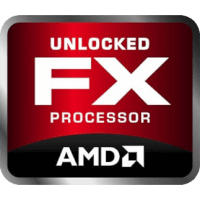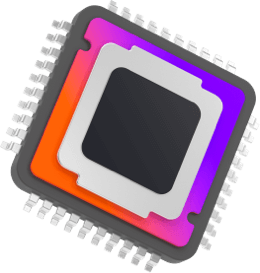| AMD FX-9370 | AMD Epyc 7702 | |
| 220 W | Max TDP | 200 W |
| NA | Power consumption per day (kWh) | NA |
| NA | Running cost per day | NA |
| NA | Power consumption per year (kWh) | NA |
| NA | Running cost per year | NA |
AMD FX-9370 vs AMD Epyc 7702

The AMD FX-9370 operates with 8 cores and 8 CPU threads. It run at 4.70 GHz base 4.70 GHz all cores while the TDP is set at 220 W.The processor is attached to the AM3+ CPU socket. This version includes 8.00 MB of L3 cache on one chip, supports 2 memory channels to support DDR3-1866 RAM and features PCIe Gen lanes. Tjunction keeps below -- degrees C. In particular, Vishera (Piledriver) Architecture is enhanced with 32 nm technology and supports AMD-V. The product was launched on Q3/2013

The AMD Epyc 7702 operates with 64 cores and 8 CPU threads. It run at 3.35 GHz base 2.50 GHz all cores while the TDP is set at 200 W.The processor is attached to the SP3 CPU socket. This version includes 256.00 MB of L3 cache on one chip, supports 8 memory channels to support DDR4-3200 RAM and features 4.0 PCIe Gen 128 lanes. Tjunction keeps below -- degrees C. In particular, Rome (Zen 2) Architecture is enhanced with 7 nm technology and supports AMD-V, SVM. The product was launched on Q3/2019
Compare Detail
| 4.40 GHz | Frequency | 2.00 GHz |
| 8 | Cores | 64 |
| 4.70 GHz | Turbo (1 Core) | 3.35 GHz |
| 4.70 GHz | Turbo (All Cores) | 2.50 GHz |
| Hyperthreading | Yes |
|
| Overclocking | No |
|
| normal | Core Architecture | normal |
| no iGPU | GPU | no iGPU |
| No turbo | GPU (Turbo) | No turbo |
| 32 nm | Technology | 7 nm |
| No turbo | GPU (Turbo) | No turbo |
| DirectX Version | ||
| Max. displays | ||
| DDR3-1866 | Memory | DDR4-3200 |
| 2 | Memory channels | 8 |
| Max memory | ||
| ECC | Yes |
|
| -- | L2 Cache | -- |
| 8.00 MB | L3 Cache | 256.00 MB |
| PCIe version | 4.0 | |
| PCIe lanes | 128 | |
| 32 nm | Technology | 7 nm |
| AM3+ | Socket | SP3 |
| 220 W | TDP | 200 W |
| AMD-V | Virtualization | AMD-V, SVM |
| Q3/2013 | Release date | Q3/2019 |
Cinebench R23 (Single-Core)
Cinebench R23 is the successor of Cinebench R20 and is also based on the Cinema 4 Suite. Cinema 4 is a worldwide used software to create 3D forms. The single-core test only uses one CPU core, the amount of cores or hyperthreading ability doesn't count.
Cinebench R23 (Multi-Core)
Cinebench R23 is the successor of Cinebench R20 and is also based on the Cinema 4 Suite. Cinema 4 is a worldwide used software to create 3D forms. The multi-core test involves all CPU cores and taks a big advantage of hyperthreading.
Cinebench R20 (Single-Core)
Cinebench R20 is the successor of Cinebench R15 and is also based on the Cinema 4 Suite. Cinema 4 is a worldwide used software to create 3D forms. The single-core test only uses one CPU core, the amount of cores or hyperthreading ability doesn't count.
Cinebench R20 (Multi-Core)
Cinebench R20 is the successor of Cinebench R15 and is also based on the Cinema 4 Suite. Cinema 4 is a worldwide used software to create 3D forms. The multi-core test involves all CPU cores and taks a big advantage of hyperthreading.
Cinebench R15 (Multi-Core)
Cinebench R15 is the successor of Cinebench 11.5 and is also based on the Cinema 4 Suite. Cinema 4 is a worldwide used software to create 3D forms. The multi-core test involves all CPU cores and taks a big advantage of hyperthreading.
Geekbench 5, 64bit (Single-Core)
Geekbench 5 is a cross plattform benchmark that heavily uses the systems memory. A fast memory will push the result a lot. The single-core test only uses one CPU core, the amount of cores or hyperthreading ability doesn't count.
Geekbench 5, 64bit (Multi-Core)
Geekbench 5 is a cross plattform benchmark that heavily uses the systems memory. A fast memory will push the result a lot. The multi-core test involves all CPU cores and taks a big advantage of hyperthreading.
Blender 2.81 (bmw27)
Blender is a free 3D graphics software for rendering (creating) 3D bodies, which can also be textured and animated in the software. The Blender benchmark creates predefined scenes and measures the time (s) required for the entire scene. The shorter the time required, the better. We selected bmw27 as the benchmark scene.
Geekbench 3, 64bit (Single-Core)
Geekbench 3 is a cross plattform benchmark that heavily uses the systems memory. A fast memory will push the result a lot. The single-core test only uses one CPU core, the amount of cores or hyperthreading ability doesn't count.
Geekbench 3, 64bit (Multi-Core)
Geekbench 3 is a cross plattform benchmark that heavily uses the systems memory. A fast memory will push the result a lot. The multi-core test involves all CPU cores and taks a big advantage of hyperthreading.
Cinebench R11.5, 64bit (Single-Core)
Cinebench 11.5 is based on the Cinema 4D Suite, a software that is popular to generate forms and other stuff in 3D. The single-core test only uses one CPU core, the amount of cores or hyperthreading ability doesn't count.
Cinebench R11.5, 64bit (Multi-Core)
Cinebench 11.5 is based on the Cinema 4D Suite, a software that is popular to generate forms and other stuff in 3D. The multi-core test involves all CPU cores and taks a big advantage of hyperthreading.
Estimated results for PassMark CPU Mark
Some of the CPUs listed below have been benchmarked by CPU-Comparison. However the majority of CPUs have not been tested and the results have been estimated by a CPU-Comparison’s secret proprietary formula. As such they do not accurately reflect the actual Passmark CPU mark values and are not endorsed by PassMark Software Pty Ltd.
Monero Hashrate kH/s
The crypto currency Monero has been using the RandomX algorithm since November 2019. This PoW (proof of work) algorithm can only efficiently be calculated using a processor (CPU) or a graphics card (GPU). The CryptoNight algorithm was used for Monero until November 2019, but it could be calculated using ASICs. RandomX benefits from a high number of CPU cores, cache and a fast connection of the memory via as many memory channels as possible

Electric Usage Estimate


